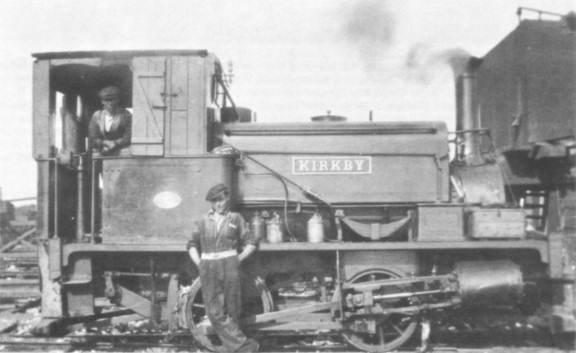
| THE INDUSTRIAL RAILWAY RECORD |
© JUNE 1973 |
PICTURE PARADE
FRANK JONES
One of the less salubrious tasks for the industrial locomotive was rubbish dump working. Strangely enough, all the sites were located on the Thames, all but one being on the Essex marshes, while the exception was to be found on the other side of the River in Kent. The rubbish originated in London and was loaded into barges and dumped into the marshes around Rainham, Essex, where it was either deliberately fired or caught fire spontaneously. When the wind was blowing in the wrong direction the drifting smoke and smell did not please the occupants of the new housing estates of Hornchurch, so the rubbish shoots were then covered with Thames mud. The open burning now became subterranean and visitors to the sites would see warning notices to this effect. Further enhancing the "charm" of these sites were flocks of gulls and the inevitable swarms of rats!
Track was largely temporary and, rather surprisingly, standard gauge, although this may largely have been governed by the availability of locomotives. An interesting point was that the systems were totally isolated from any main line, so this factor cannot have had any bearing on the choice of standard gauge track.
The locomotives employed usually had 8in cylinders and were an interesting collection. Best known of these were the diminutive Hudswell Clarkes, complete with side cab windows which afforded a measure of protection from the elements for the crew, as the marshes are bleak places in winter. Examples by T. Green and Dick Kerr could also be found. One locomotive, Avonside 1702 of 1915, seems to have escaped photographers, but not a V2 rocket, for it is recorded in Pocket Book C as destroyed by a German V2 rocket in 1945! If a photograph is known I would like to hear of it.
The illustrations show some of the locomotives at these rubbish sites. KIRKBY (Manning Wardle 1303 of 1895) worked for Flower & Everett Ltd at their Rainham rubbish shoot, which closed as early as 1934: this photograph was taken by the late George Groves. Also at Rainham, but this time employed by W.R. Cunis Ltd., were the two locos in the second view, Barclay 2167 of 1942 (left) and Bagnall 2170 of 1921. This photograph was taken in 1951, as was our third illustration, which shows Hudswell Clarke 1442 of 1921 (after her disposal by William Cory & Son Ltd ) at Peters & Barham, Romford.



(Society records give Hudswell Clarke 1442 as sold for scrap in 1951 to Essex Welding Co., Romford. Were Peters & Barham (Ltd?) and Essex Welding Co one and the same? And does anyone know the exact date when the V2 rocket struck Avonside 1702? - Hon. Eds.)